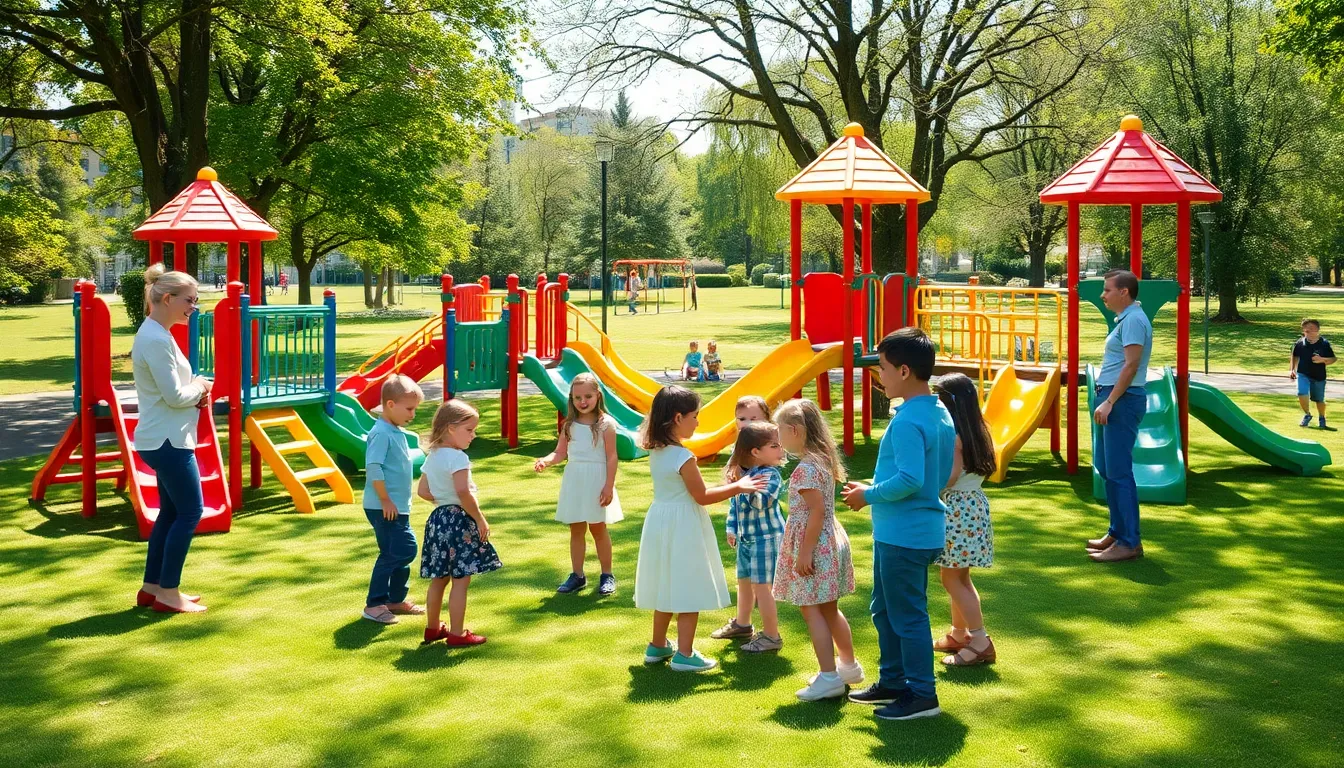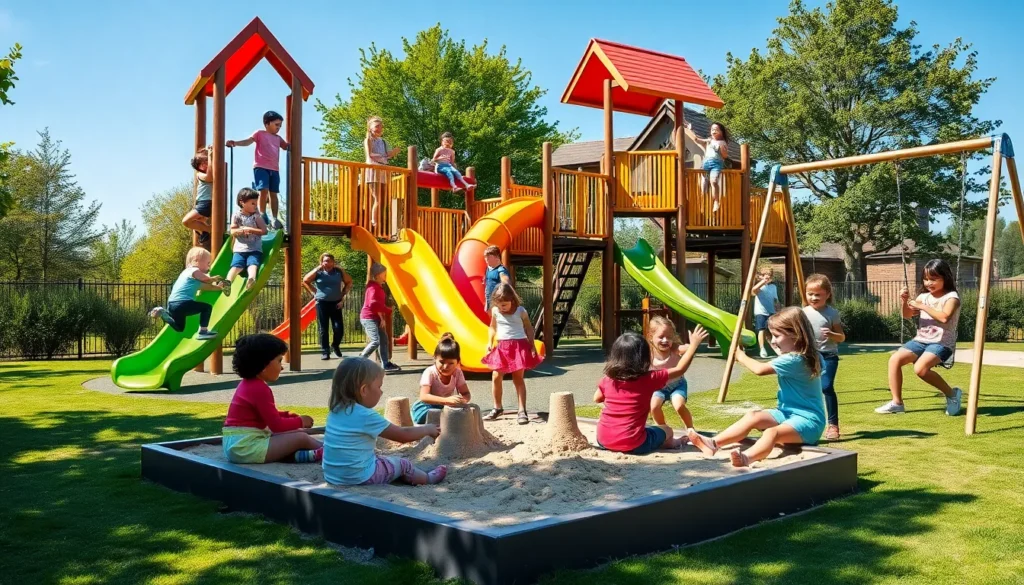Let’s face it: children are like tiny tornadoes of energy, and the best way to let them unleash that power is through outdoor play. With the right outdoor play equipment, they can transform into adventurers or imaginative explorers, right in their own backyard. But it’s not just about having fun: it’s about learning and growing. In this piece, we’ll jump into the wonderful world of early years outdoor play equipment and why it’s essential for healthy childhood development. Let’s unlock the secrets of outdoor play together, grab your explorer hat.
Table of Contents
ToggleImportance of Outdoor Play in Early Childhood Development

Outdoor play serves as a critical component in the early years of childhood development. Children engage their senses while exploring different environments. The sun, grass, and fresh air contribute to their overall health, both physically and mentally. They’re not just playing: they’re developing motor skills, enhancing social interactions, and boosting cognitive abilities. Think of outdoor play as a natural classroom without walls.
Also, outdoor play helps in building problem-solving skills. When children climb structures or navigate obstacle courses, they learn to assess risks and make decisions, valuable skills they’ll carry into adulthood. Research consistently shows that children who engage in regular outdoor play exhibit fewer behavioral issues, improved focus, and heightened creativity. So, investing in outdoor play equipment isn’t just beneficial: it’s crucial for holistic childhood development.
Benefits of Using Outdoor Play Equipment
The benefits of incorporating outdoor play equipment into a child’s daily routine are immense. First and foremost, it encourages physical activity. With benches, slides, swings, and climbing frames, children get the exercise they need to develop strong, healthy bodies.
Also, outdoor equipment fosters social skills. Children often play in groups, learning cooperation, communication, and teamwork as they navigate shared play structures. Outdoor environments also reduce stress, both for children and their caregivers, providing a space for families to bond and relax.
Also, let’s not forget about their imagination. Outdoor play equipment can turn the backyard into a pirate ship, a castle, or even an alien planet. When kids have the tools to spark their imagination, they’re more likely to think creatively, which is essential for future success in many aspects of life.
Types of Outdoor Play Equipment for Young Children
Navigating the types of outdoor play equipment available is like entering a candy store for kids, and it can feel just as overwhelming for parents. Here’s a quick overview:
Climbing Structures
These can range from jungle gyms to more intricate climbing walls. They challenge children’s physical strength and agility while boosting their confidence.
Slides
A classic. Slides encourage children to build speed and coordination as they climb up and slide down. They also enable imaginative play, think of them as rocket launchers for kids.
Swings
Perfect for relaxation and fun. Swings help develop balance and can be enjoyed individually or in pairs, fostering social interaction.
Sand and Water Play Equipment
Sandboxes or water tables stimulate creativity and sensory development. Playing with different textures helps with fine motor skills and imaginative scenarios, who knew building a sand castle could be educational?
Balance Beams and Tracks
Fostering balance and coordination, these pieces promote physical fitness while challenging kids in delightful ways.
Guidelines for Choosing Safe Outdoor Play Equipment
Safety should always be a primary concern when selecting outdoor play equipment for young children. Follow these handy guidelines to ensure a secure play environment:
- Material Matters: Opt for equipment made from durable, non-toxic materials. Wood and certain types of plastics are popular choices.
- Age Appropriateness: Ensure the equipment is suitable for your child’s age group. Each piece should cater to their developmental stage, preventing potential injuries.
- Surface Safety: Install equipment over soft surfaces such as grass, mulch, or rubber mats to minimize injuries from falls.
- Regular Inspections: Maintain safety by checking equipment for any wear and tear: ensure that all parts are secure and in good condition.
- Observe Play: Always monitor children during playtime. This supervision allows parents to intervene if necessary, making the experience safer for all.
Creative Ideas for Outdoor Play Activities
Once you have the right equipment in place, it’s time to jump into fun. Let’s explore some creative outdoor play activities:
Nature Treasure Hunt
Create a list of items for children to find, such as different leaves, rocks, or flowers. This encourages exploration and creativity as they hunt around the play area.
Obstacle Courses
Construct temporary obstacle courses using available outdoor equipment, challenging children to crawl, jump, and climb through various stations. You can change it up often for new challenges.
Artistic Activities
Set up art stations outside, think painting with water, outdoor chalk art, or leaf printing. The fresh air enhances creativity and makes clean-up a breeze.
Team Games
Organizing games like tag, hide and seek, or relay races fosters social connections and teamwork skills. Plus, who doesn’t love a good run-around after using the swing set?
Maintenance and Care of Outdoor Play Equipment
Maintaining outdoor play equipment is essential for longevity and safety. Here are a few vital tips:
- Regular Cleaning: Remove debris and clean the equipment routinely to prevent wear and tear. A little soap and water can work wonders.
- Inspection Routine: Check for any loose screws, damaged parts, or rust. Fix or replace any problematic areas promptly to ensure safety.
- Seasonal Care: Prepare your equipment for seasonal changes. For example, if you experience harsh winters, cover it to prolong its life.
- Proper Storage: When not in use, consider storing smaller pieces indoors or in a shed to protect them from the elements.








